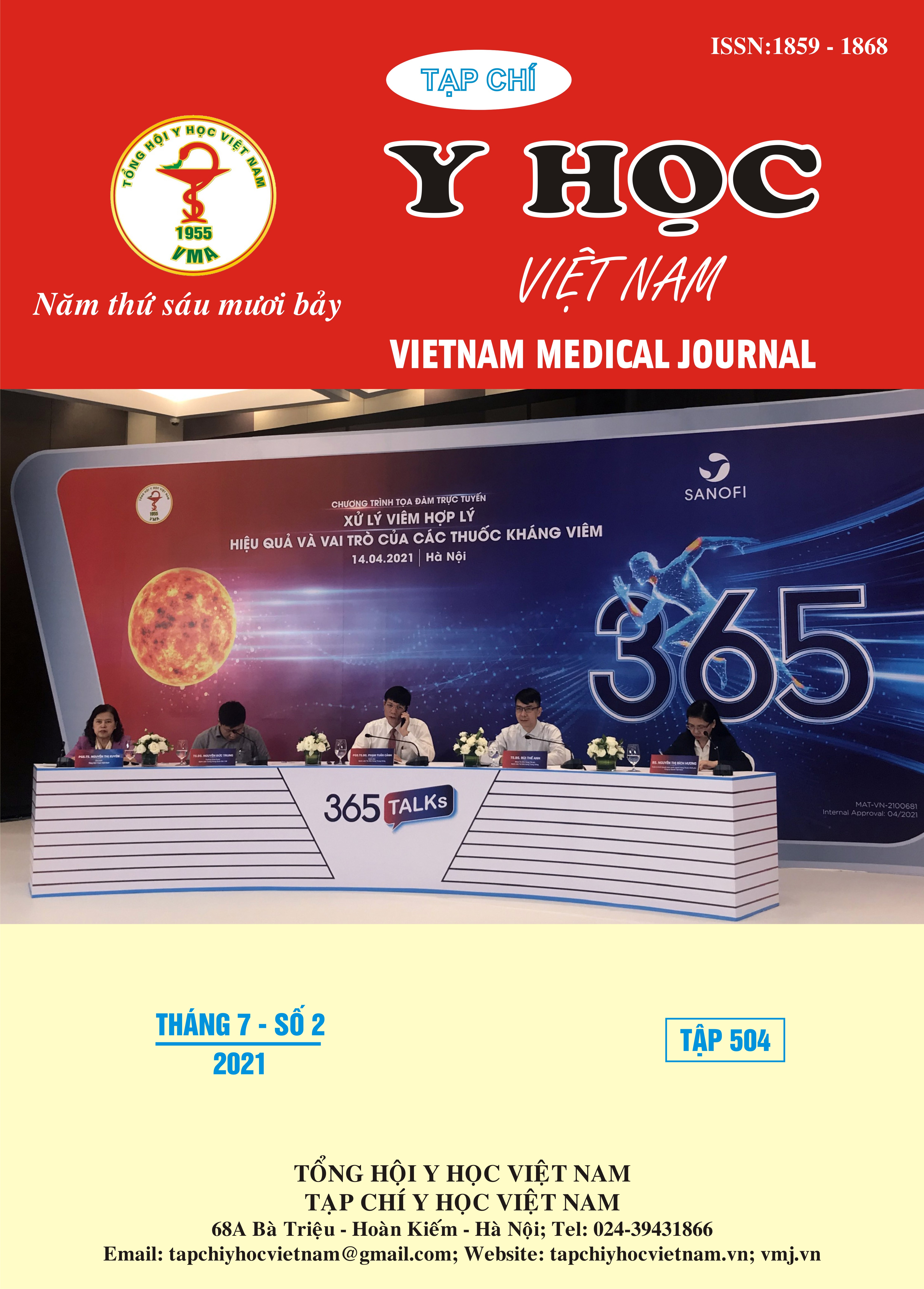FUNCTIONAL NEUROLOGICAL ASSESSMENT OF THE PATIENT AFTER STROKE BY HYPERBARIC OXYGEN THERAPY
Main Article Content
Abstract
Stroke is a leading cause of death and sequelae for the elderly. Objectives: To assess the effectiveness of neurological rehabilitation for patients with ischemic stroke at Ha Noi rehabilitation hospital in 2020 - 2021. Patients and methodology: controlled intervention study on35 patients, divided in two intervention groups and control group. Results: The level of independence in daily living according to the Barthel scale improved from 9 patients who were completely dependent (47.4%) at admission to 0 patients (0%) in the intervention group and 5 patients (31.3%) at admission decreased to 1 patient (6.3%) in the control group. The proportion of independent patients from 0 patients (0%) at admission increased to 5 independent patients (26.3%) and 2 completely independent patients (10.5%) in the intervention group. intervention and 0 independent patients (0%) at admission increased to 4 patients (25%) in the control group (p<0.05). Mild sequelae after cerebral stroke according to the Rankin scale in the intervention group and the control group were similar (47.4% vs 43.8%), however, at moderate sequelae, the proportion of the study group decreased significantly compared with the control group (5.2% vs 47.4%) (p<0.05). Conclution: There is a positive improvement in the group of patients who are receiving hyperbaric oxygen therapy in patients with ischemic stroke. Initialy, no significant adverse effects were noted in the intervention group for hyperbaric oxygen therapy.
Article Details
Keywords
ischemic stroke, rehabilitation, hyperbaric oxygen therapy
References
2. WHO (2020). Disease Burden and Mortality Estimates. WHO. Accessed November 9.
3. Bộ Y tế (2014). Báo cáo chung Tổng quan nghành y tế năm 2013, Tăng cường dự phòng và kiểm soát bệnh không lây nhiễm. Hà Nội. In: 2014.
4. Chopp M và Li Y (2012). Kích thích tính mềm dẻo và sự hồi phục chức năng sau đột quỵ - Liệu pháp Dược lý và Liệu pháp tế bào. Tạp chí Y Dược Lâm sàng 108, 7, 5-9.
5. Londahl M, Katzman P, Nilsson A, Hammarlund C (2010). Hyperbaric oxygen therapy facilitates healing of chronic foot ulcrers in patients with diabetes. Diabetes Care 2010; 33: 998 – 1003.
6. Dương Văn Hải (2017). Đặc điểm lâm sàng, hình ảnh chụp cắt lớp vi tính sọ não ở bệnh nhân nhồi máu não trước và sau điều trị bằng oxy cao áp tại viện y học biển năm 2016-2017. Published online 2017.
7. Lê Thị Hồng (2017). Đặc điểm lâm sàng, cận lâm sàng và kết quảđiều trịnhồi máu não cấp bằng liệu pháp Oxy cao áp tại viện y học biển.
8. Chen-Yu Chen, Rw W, Nw T, et al.Increased circulating endothelial progenitor cells and improved short-term outcomes in acute non-cardioembolic stroke after hyperbaric oxygen therapy.J Transl Med. 2018;16(1). doi:10.1186/ s12967-018-1629-x


